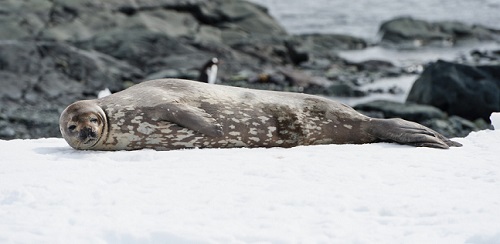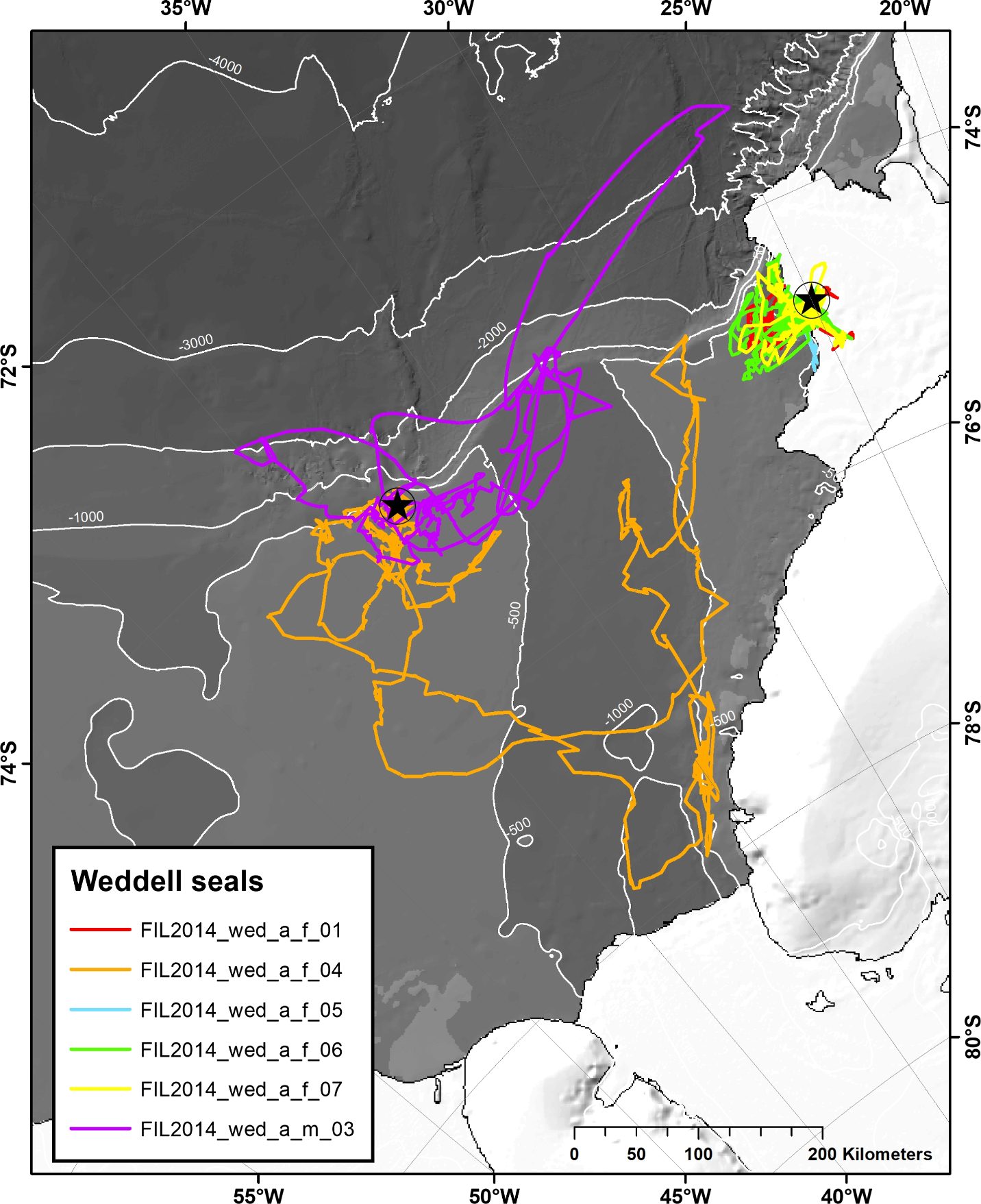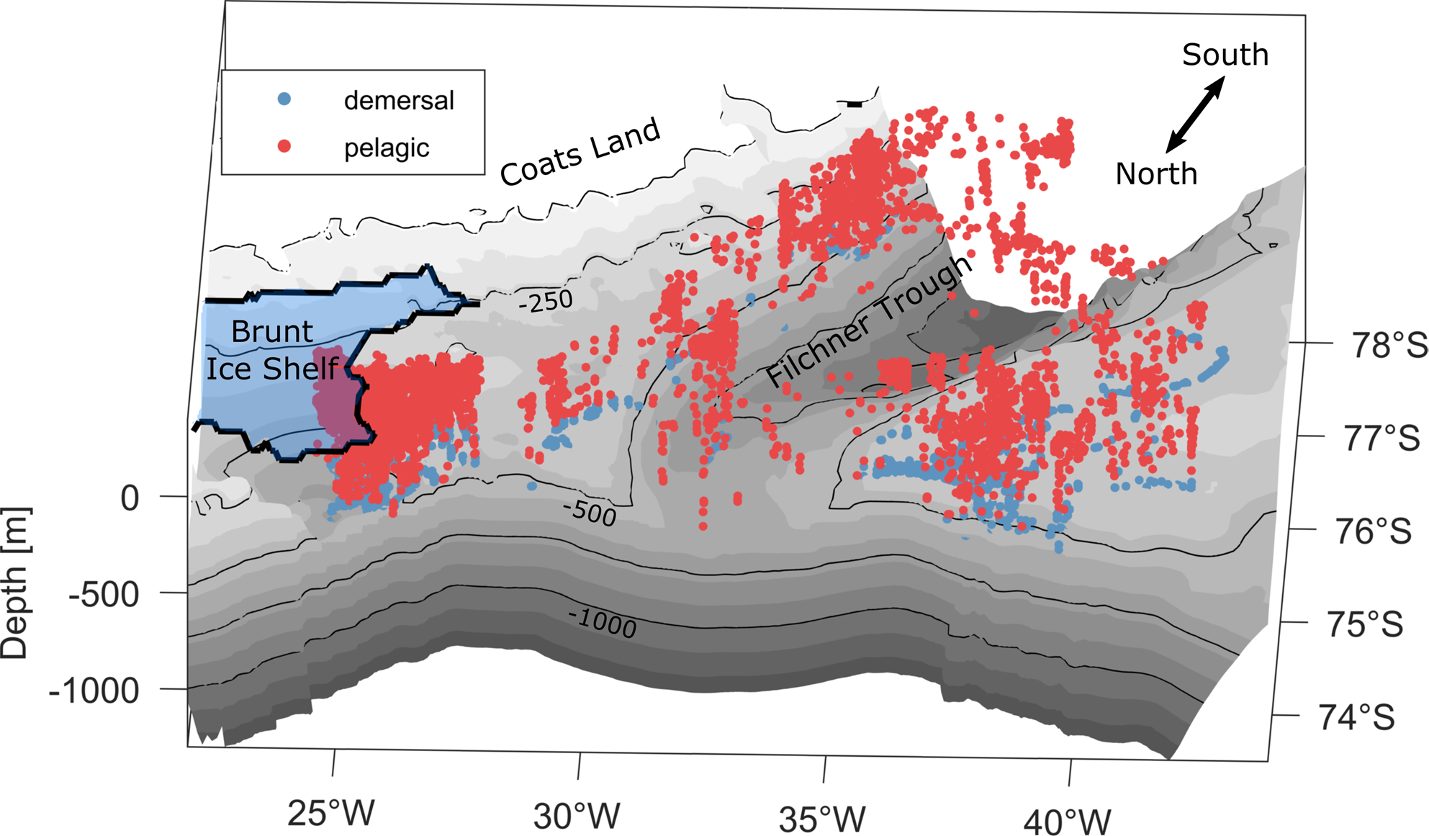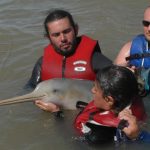← Back
Better understanding of Weddell seals’ diving

Weddell seals are the most southerly breeding mammal species. They are found among other places in the Weddell Sea, but their behaviour and foraging strategies are not well-known, in an area itself largely unknown. Scientists at the Alfred Wegener Institut tracked them using Argos PTTs recording their dive behaviour making it possible to shed some light on their mysteries.
The most southerly breeding mammal
The Filchner Outflow System in the south-eastern Weddell Sea, bordering Antarctica, is an oceanographic key region. It is a biological productivity “hotspot”, showing among other species a number of marine top predators. Climate models predict an increased melting rate of the Filchner-Ronne Ice Shelf due to the redirection of warm waters, thus potentially impacting the outflow system.
The Weddell seal (Leptonychotes weddellii) usually lives in high-Antarctic regions. It is the most southerly breeding mammal species. Weddell seals aggregate in fast-ice habitats close to the Antarctic coast year-round, but they are also found in the pack ice. They feed on different fish species at the sea floor and in the water column, but also on cephalopods and crustaceans. Existing investigations on their movements, especially during winter, are fragmentary.
More info about marine animals tracking
Weddell seals’ diving recorded
Six adult Weddell seals were equipped with Argos PTTs, so called Conductivity Temperature Depth-combined data loggers, in austral summer 2014 in the Filchner Outflow System. Those data loggers record data on geographic position, dive behaviour and hydrography at the same time (temperature and salinity, the latter from the conductivity). The objective was to investigate the influence of environmental conditions on the seals’ foraging behaviour throughout seasons, focusing on the oceanographic features.
The dive profiles, recorded every 4 s during a dive, were simplified to be more compact, and only four main points, where the dive trajectory changed most rapidly have been kept and transmitted, along with two surface points (at the beginning and end of each dive). One of the four points is the maximum dive depth considered as a measure of foraging behaviour.
Behaviour Analysis
The results show that Weddell seals performed pelagic (open-sea) and demersal (down to the seafloor then back up again) dives, mainly on the continental shelf and especially in areas characterized by the inflow of Modified Warm Deep Water. The assumption is that they found an abundant benthopelagic fish fauna there, but multi-disciplinary studies would be necessary to better understand the underlying biological features of the area. Differences in movements and habitat use between two different groups of Weddell seals were observed, possibly linked to a difference in age with older seals being more territorial staying closer to their colonies on the coastal fast-ice than younger, non-reproductive ones.
This study emphasizes the benefits of measuring hydrographic data and the behaviour of marine top predators such as the Weddell seal at the same time, even if a better knowledge of the prey distribution and availability in the area would be relevant for further investigations. Collecting baseline data is also important as the whole region may soon undergo rapid environmental transformations due to climate change. Generally, a better understanding of the structure and trophic interactions of the Filchner Outflow System food web is essential, particularly in view of a proposed Marine Protected Area in the Weddell Sea.
Reference
- Dominik A. Nachtsheim, Svenja Ryan, Michael Schröder, Laura Jensen, W. Chris Oosthuizen, Marthán N. Bester, Wilhelm Hagen, Horst Bornemann, 2019: Foraging behaviour of Weddell seals (Leptonychotes weddellii) in connection to oceanographic conditions in the southern Weddell Sea, Progress in Oceanography, 173 (2019) 165-179 , https://doi.org/10.1016/j.pocean.2019.02.013
Links
- Alfred Wegener Institute Helmholtz Centre for Polar and Marine Research, Bremerhaven, Germany: https://www.awi.de
- Mammal Research Institute, University of Pretoria, South Africa: https://www.up.ac.za/mammal-research-institute
- Research projects and data:
Marine Mammal Tracking (MMT): http://www.wdc-mare.org/projects/mmt.html
Marine Mammals Exploring the Oceans Pole to Pole (MEOP): http://meop.net/



